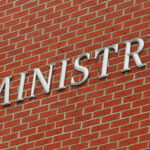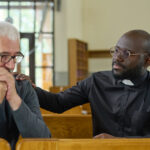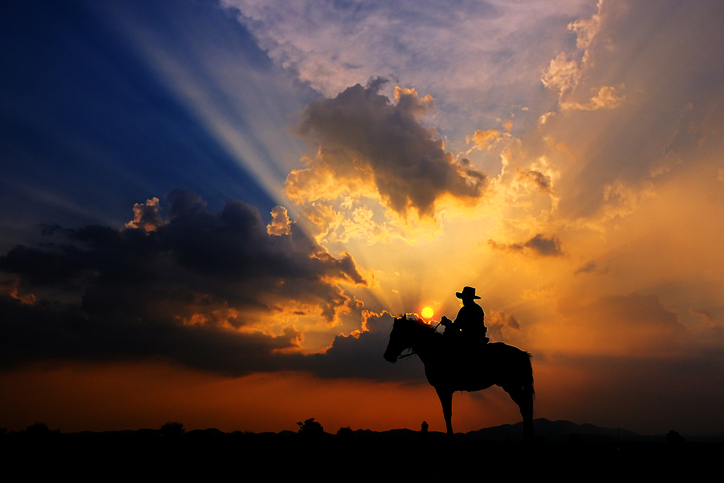
A cowboy church is a congregation that merges Christian principles with the western lifestyle. Advocating “come-as-you-are” attendance, cowboy churches host services in auditoriums, rodeo arenas, barns, and other facilities common in western culture.
Take those core beliefs of God the Father, the Son, and the Holy Spirit. Now, add country music, dusty blue jeans, and boots. That’s a start. Introduce a few horse-riding attendees, saddles, and western decorative accoutrement. All manner of farmhand tools adorn the walls, and tribal blankets hang over railings. You have the basis of what you can expect to see and hear in a cowboy church.
The whole principle of a cowboy church is a dressed-down, informal worship service without excessive pomp and circumstance. No need to wear your Sunday best – just hop off the tractor and listen to the Good News. It doesn’t matter if you’re wearing a sweatshirt and jeans or Carhartts and camo. It’s a type of worship that can only be found in the U.S. – born of the rugged lifestyle led by ranchers, farmers, and the working class throughout the west.
Explore a Christian Ministry Degree – Request More Info Today!
What Do Cowboy Churches Believe?
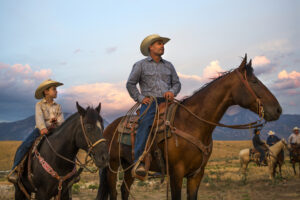 Cowboy church ministers preach the Bible as God’s guide for mankind, using straightforward language to convey His lessons; it’s a template for living a life devoid of sin. Salvation is granted to those who believe in Christ, and Baptism represents the spiritual transformation (death, and rebirth) of an individual who has accepted God into his or her life.
Cowboy church ministers preach the Bible as God’s guide for mankind, using straightforward language to convey His lessons; it’s a template for living a life devoid of sin. Salvation is granted to those who believe in Christ, and Baptism represents the spiritual transformation (death, and rebirth) of an individual who has accepted God into his or her life.
Many cowboy churches align with the Southern Baptist faith. As such, a great number practice baptism, inviting believers to experience rebirth through a metal stock tank. Once one rises from the water, they are born again – a believer and follower of Jesus. In addition, the Bible is God’s final word, and the final guide as to how one must live a Christian life.
However, not all Cowboy Churches are denominational. Baptist themes may permeate throughout a typical service, but the following are evident in almost every arena:
- God is the father of all.
- Jesus restored mankind’s relationship with God.
- The Holy Spirit resides in all who receive Christ as their savior.
- The Bible is a guide for all those who wish to live a Christian life.
- All are welcome: no matter where you’re from, anyone curious about God’s work may attend a service.
The last point warrants some more context. A “typical” church has some of the best dressed in attendance. Sermons feel more like analyses; hermeneutic interpretations of the Bible’s deepest teachings, the context of which are often lost on those who have never read the Good Book.
In contrast, cowboy churches feature straightforward sermons. Evangelism is simple: Accept God and his teachings, and you’ll be saved. Ministers deliver the Bible’s lessons in plain English, avoiding any obscure language that may be off-putting to newcomers. It’s this approach that keep people coming back.
The Daily Campus, a paper from Southern Methodist University, interviewed attendees of the Cowboy Church of Ellis County, who echoed the sentiments of a welcoming atmosphere.
“I think it definitely is a ‘come as you are’ place,” said Jeannie Thorne, a Southern Baptist in an interview with The Daily Campus. “Everyone is welcome. It does not matter what your beliefs might be. You can come dressed up or you can come in your casual war, it does not matter. I don’t believe anyone judges you.”
What Can You Expect at a Cowboy Church?
When rolling up to a congregation such as the Cowboy Church of Ellis County, you won’t see a chapel with an ivory-colored bell tower. Instead, a steel, open-aired rodeo arena greets you. Church ushers astride horses invite you in.
The music is the first thing that hits you. The fiddles, steel guitars, and other instruments of the western genre keep the spirit high. You may hear a cover of a popular country song mixed in with westernized Christian hymns. Some attendees sing along, while others chat with friends, sipping coffee out of mugs, Styrofoam cups or thermoses.
Then, the pastor takes the stage at the center of the arena. The service may begin with a baptism, in which a new congregant is plunged into a horse trough. Then begins the sermon in which the pastor discusses key ideas within the Christian faith: loving thy neighbor, forgiving those who have done us wrong, and exercising discipline when tempted with vices.
What comes after? Depends on the day, but it’s not uncommon to indulge in an array of western activities. Barrel racing, amateur bull riding, roping and the like take place. What other church in America are you going to find such an atmosphere?
An Unexpected Place for the First Cowboy Church
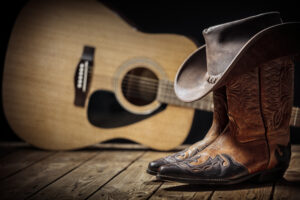 What began as an informal subculture eventually led to a congregation with four walls. It started in Billy Bob’s, a bar in Texas. You read that right: a bar.
What began as an informal subculture eventually led to a congregation with four walls. It started in Billy Bob’s, a bar in Texas. You read that right: a bar.
In 1985, Minister Jeff Copenhaver, then president of the Cowboy Chapter of the Fellowship of Christian Athletes, met Billy Bob Barnett (the owner of the bar), and his manager Tex Whitson.
After seeing Copehnhaver preach at the National Finals Rodeo in Las Vegas, Whitson asked the minister if he would give a service at Billy Bob’s rodeo arena. The two new friends hosted three services, the success of which prompted them to host Sunday services on an ongoing basis.
This story embodies the essence of what a cowboy church is really all about: it’s reaching bonafide westerners through the venues and activities in their lives. They welcome all hardworking, common folk who simply want to worship, whether it’s in a button-up shirt or dusty blue jeans.
A History of Cowboy Churches
 It all started with a radio program. Back in the 1940s, a show called “Cowboy Church of the Air” spread across the country.
It all started with a radio program. Back in the 1940s, a show called “Cowboy Church of the Air” spread across the country.
The show was hosted by Stuart Hamblen, the son of a Methodist preacher, and an active country musician throughout the 1920s. According to the Texas State Historical Association, his career soared after recording four songs with the Victor Recording Company in 1929, leading to his own radio program with KFWB in Los Angeles.
Unfortunately, the fame and fortune led Hamblen into temptation. During the ‘40s, Hamblen started gambling and developed an insatiable appetite for alcohol. One drinking binge landed him in jail after he got into a brawl and shot out streetlights.
What led him back to God? Evangelist Billy Graham’s tent revival campaign in LA breathed new life into Hamblen. Following Graham’s service, Hamblen announced his allegiance to Christ, swearing off drinking, smoking, and gambling. Thus, in the 1950s, he launched a new show: “The Cowboy Church of the Air.”
As such, Hamblen deserves credit with merging the themes and emotions of the country genre with the Christian faith. But it wasn’t until the 1970s when the first physical cowboy churches began springing up throughout the state of Texas.
The first cowboy churches weren’t massive, or even formal for that matter. During the ‘60s and ‘70s, evangelism captured the attention of cowboys throughout the rodeo circuit. It wasn’t uncommon to see rodeo arenas hosting informal Sunday morning worship services.
Then, in 1970, Cowboys for Christ sprouted from the dusty arenas. The organization served as a launching pad for cowboy churches across the U.S., introducing those immersed in the livestock lifestyle to God’s graces. Cowboys for Christ wasn’t the only organization to emerge from this phenomenon, either. The Rodeo Cowboys Ministry, American Fellowship of Cowboy Churches, and the Fellowship of Christian Athletes joined the fray.




